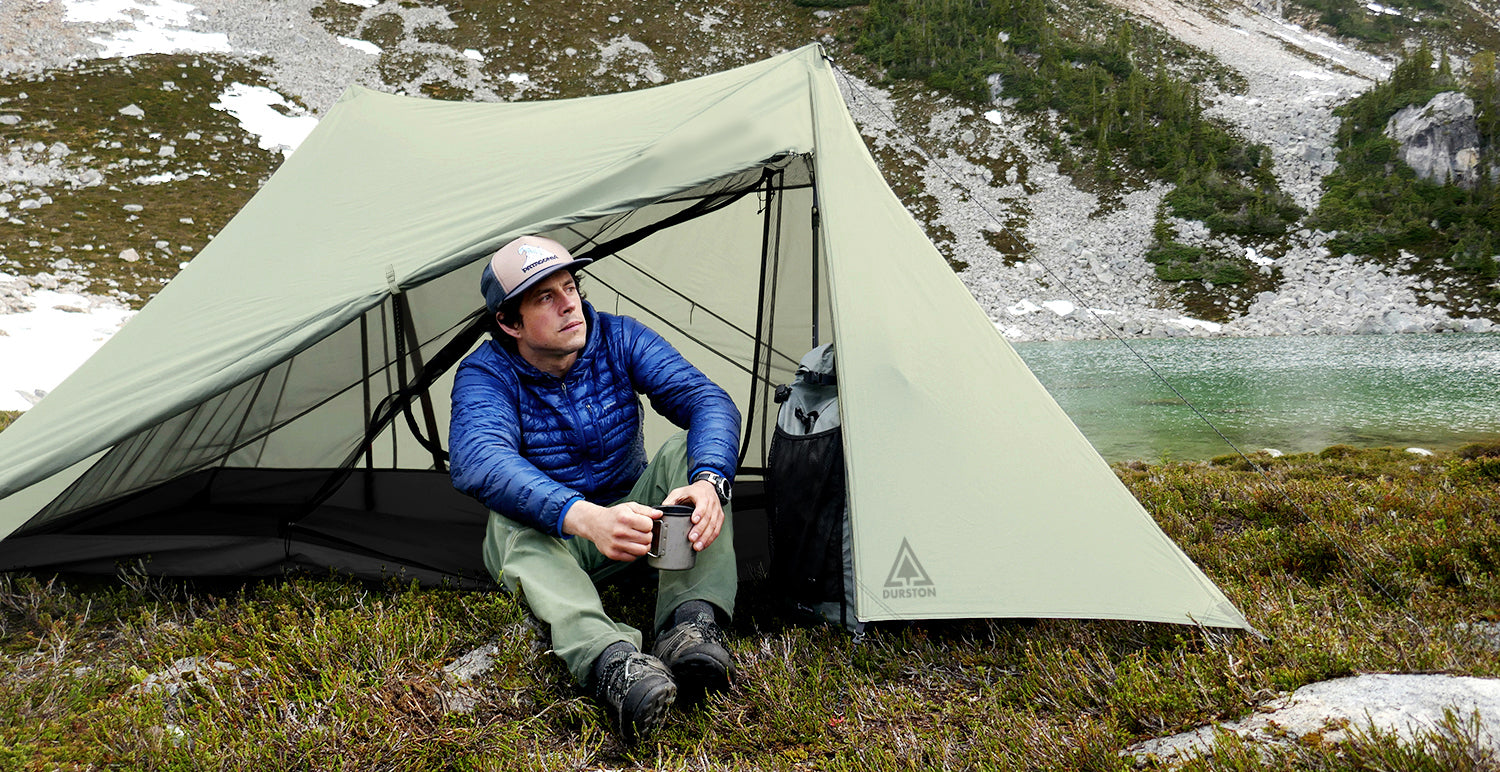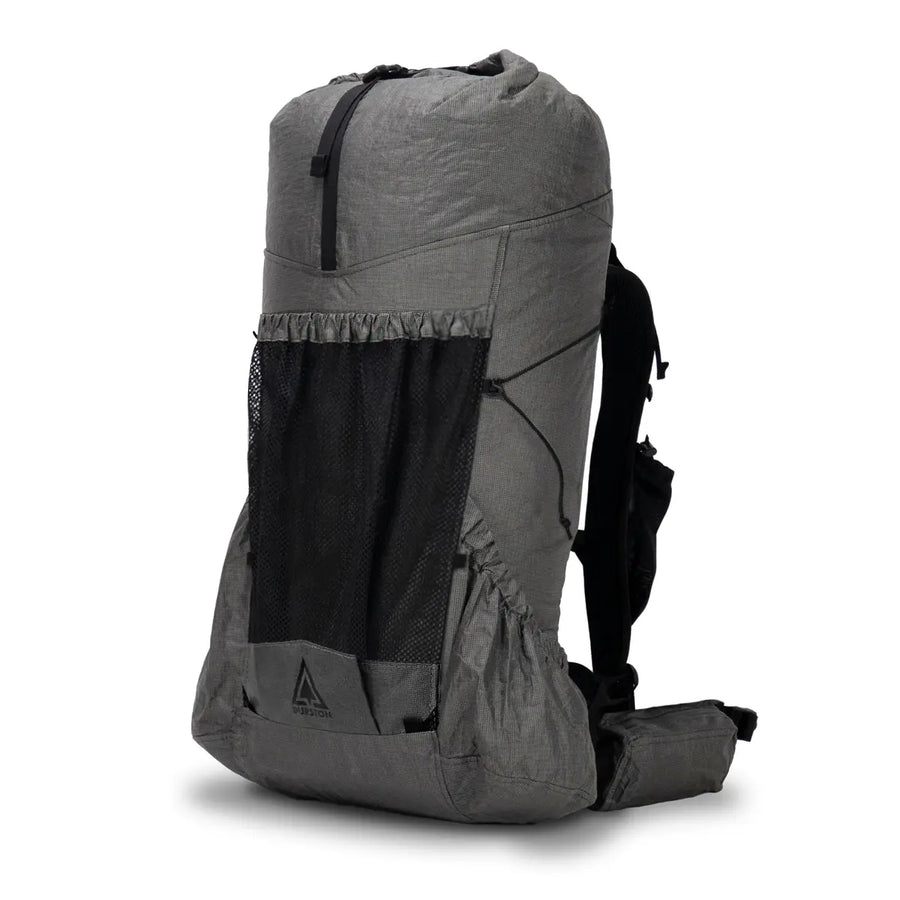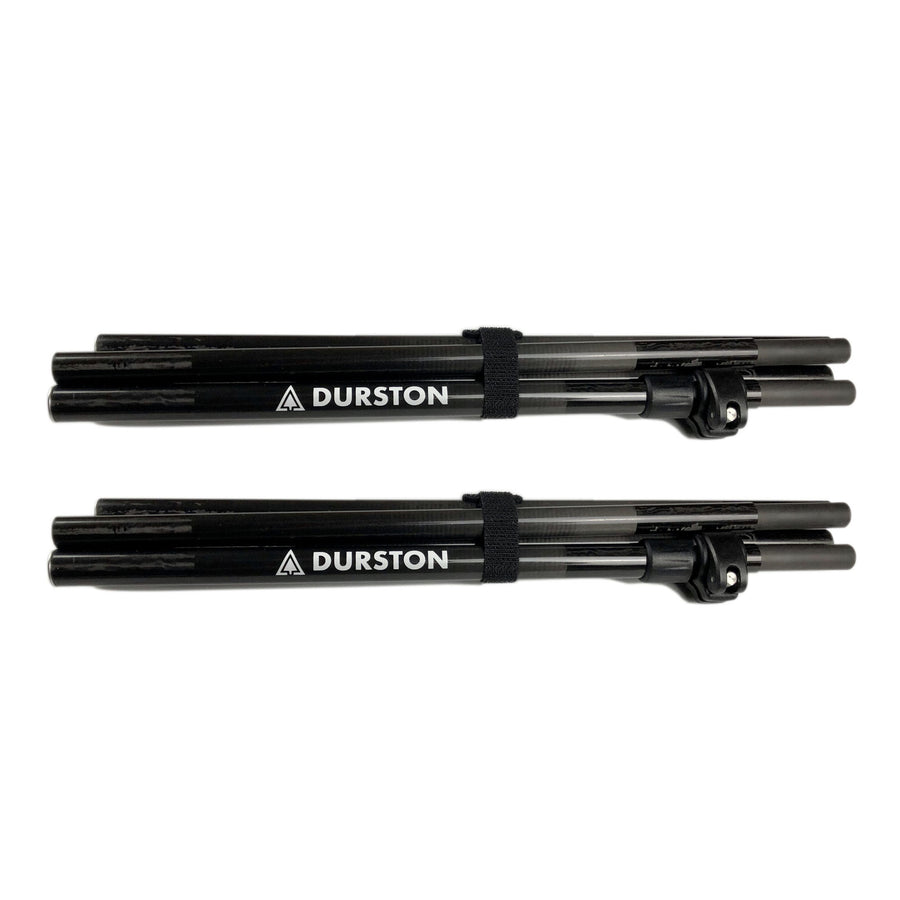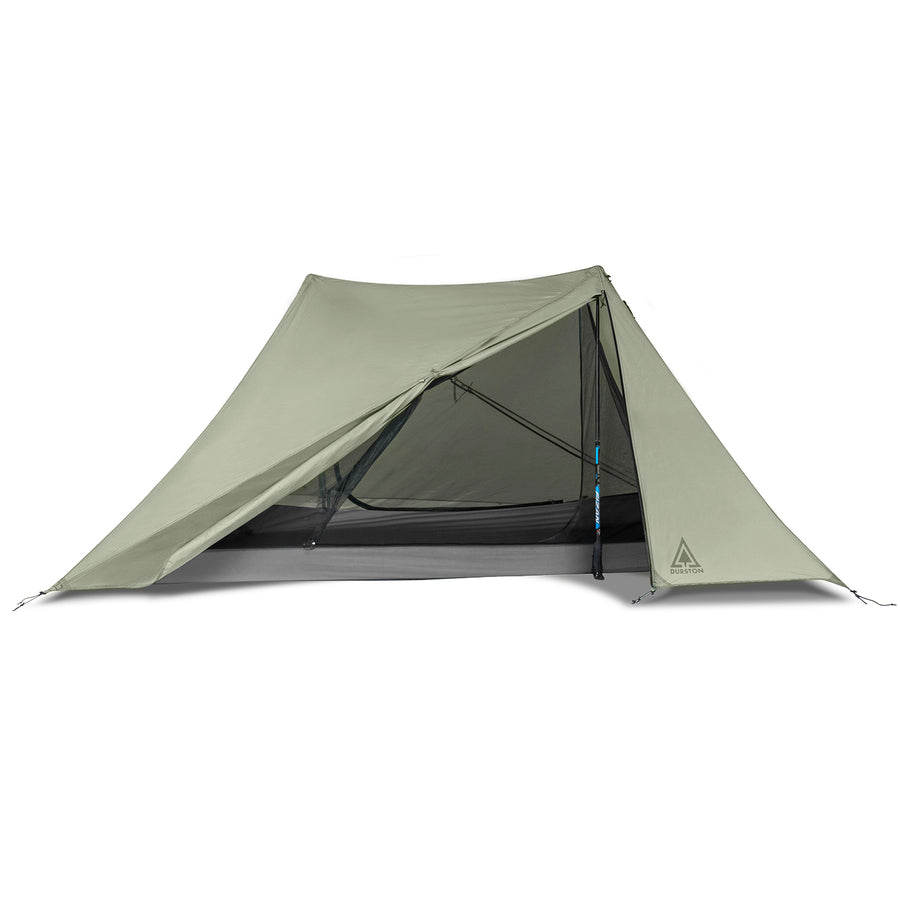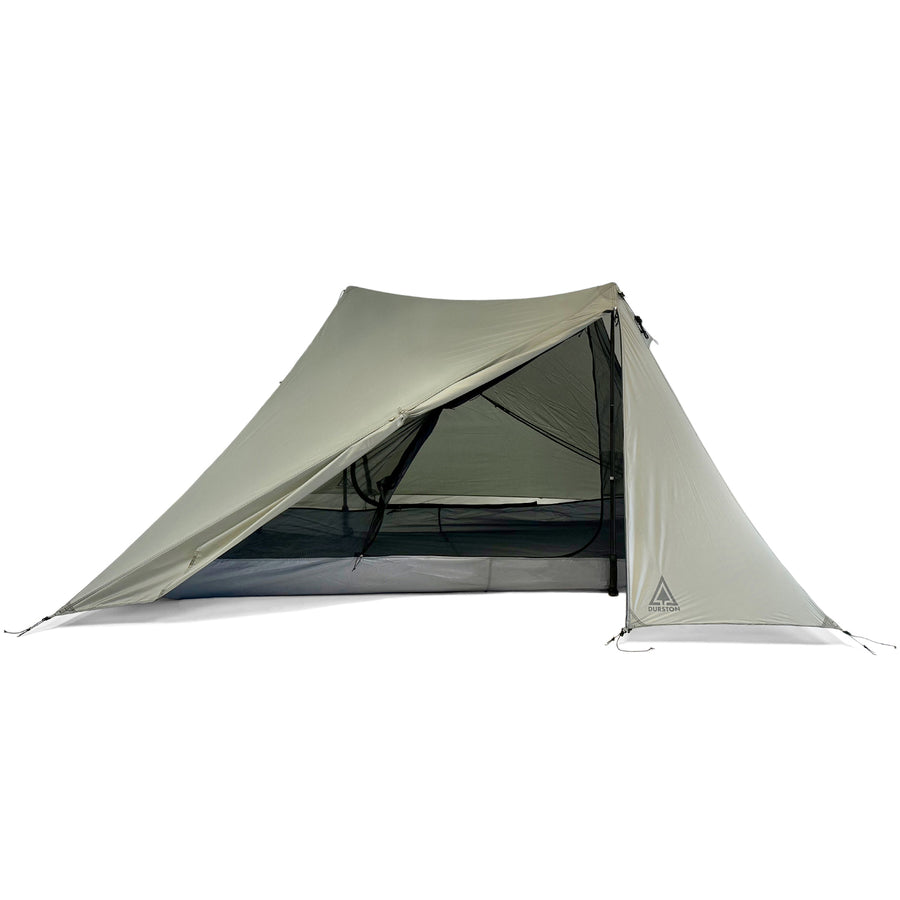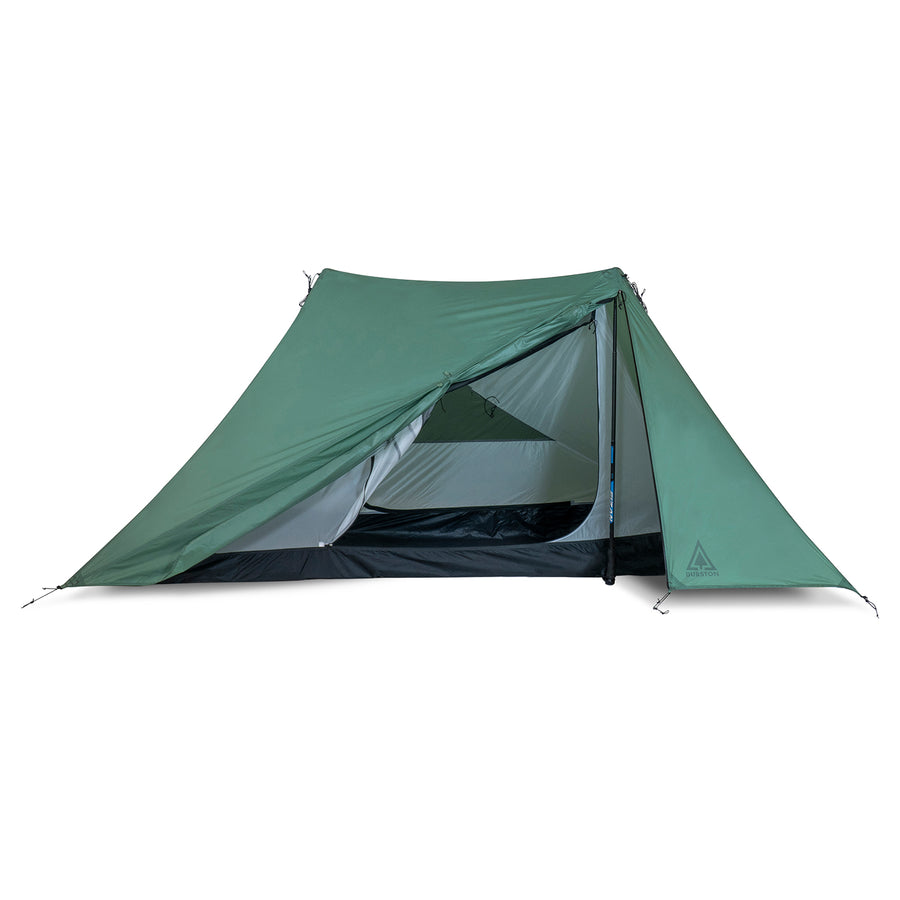Durston Gear is grounded in four core philosophies:
Most of the outdoor equipment on the market today is sub-optimal because the end result hasn’t been achieved by reasoning from first principles. With tents especially, a designer will start from some pre-existing basic shape, and then when shortcomings are identified, they will add on features to remedy that, rather than asking if they should be using that basic shape in the first place. The result is tents that are more complex, heavy, and failure-prone than need be.
An excellent example of this is the proliferation of variants off of the classic single pole pyramid design. Single pole pyramid tents have an admirable simplicity to them. Yet several major shortcomings too: limited headroom, the unusable area around the low edges, and the pole often interferes in the doorway or living space. If a designer is okay with these shortcomings in the end product, then a single-pole pyramid is a nice base geometry, but if a designer is not, they should look at other starting points.
Yet, instead of finding a base geometry that lends itself optimally to the desired end result, the ultralight world is filled with tent designs with piled post-hoc ideas onto the single-pole pyramid. We see struts and short poles being added at the peak to improve headroom, struts around the lower edges, mid-panel guyouts to pull out the walls for more volume, and the poles positioned off-center or angled to relocate it somewhere less inconvenient. All of these strategies work to some extent, but they are also suboptimal solutions because they are complicated, heavy, and failure-prone compared to what is possible. The result is tent designs that claim to espouse lightweight minimalism and yet use up to 6 struts, 8 guylines, and 12 stakes.
A better approach is to reason from first principles to identify the ideal base geometry that minimizes the need to layer on post hoc solutions. With the X-Mid, I spent years mulling over these fundamentals, such as the relative merits of designing a tent with three, four, or five sides; and weather two poles are better than one pole plus struts. From this, the patented “double diagonal” X-Mid geometry (below) emerged which eliminates the need for guylines, avoids poles in the living space and doorways, and maximizes the volume: area ratio. For the geeks out there, I’ve written a much longer post explaining this.
Marketing departments for gear companies have been claiming for decades that their gear “makes no compromises.” Frankly, this couldn’t be further from the truth and demonstrates a naivety for how gear is designed. If you build a backpack with beefy fabrics, you’ve compromised on that item being lightweight, but you’ve compromised durability if you make it with fragile fabrics. In between is a balance – which is still a compromise. Almost every design decision is a compromise, so users should be wary of companies that claim they are making none.
Compromise is inevitable, which is why the best possible approach is to acknowledge this and focus on a design that compromises consistently to achieve a coherent end product. On the market today, there are durable tents that inexplicably use weak #3 zippers that will fail long before the rest of the tent, there are fragile sleeping bags with overkill #7 zippers, and packs with frames built strong enough to carry far more weight than their 35L packbag could ever hold. These are not coherent designs, and neither are products where the designer tries to pile on features to make it work for every circumstance. I’ve been there when I tried to make a backpack suited for both lightweight hiking and mountaineering and the result was a pack that wasn’t optimal for either. Since then, I design gear where the precise intended use is clear from the outset, and every decision is made with that goal in mind.
This design philosophy extends beyond simple judgements of durability vs weight. It extends to the feature set and the geometry. For example, steep tent walls shed snow well but resist wind poorly, while shallow walls do the opposite. Either of these (or something in between) might be the right approach depending on the design goals, but a mix of steep and shallow walls is never the right choice because it combines the weaknesses of both. With every piece of gear, the best design is the one that consistently compromises towards a coherent goal.
Far too many outdoor products contain flaws that reveal a lack of real word validation. The most egregious I’ve seen is a rubber lid on a coffee mug that expands and leaks when exposed to the heat of a hot drink. Simply using the product once for it’s main intended use would have uncovered this flaw, yet 5 years later this product remains on sale with the same flaw. Too many products contain oversights from a lack of field validation. That might be doors that channel rain into the tent, vents that get permanently wrinkled when packed and hardly work after that, or sleeping bag hardware that rubs on your face all night.
I (Dan) have extensive outdoor experience, including thru-hiking the Pacific Crest Trail (2014), hiking the first yo-yo of the Great Divide Trail (2017), setting the fastest known times on long routes, packrafting first descents, and completing numerous unique routes in challenging off-season conditions. These experiences inform each design. Before any product is released, I use it in a wide range of conditions. That’s not to say I’ll think of every good idea, but you can be assured that my designs are informed by and extensively tested in a wide range of conditions. That might sound basic, but it’s surprisingly lacking across the industry.



